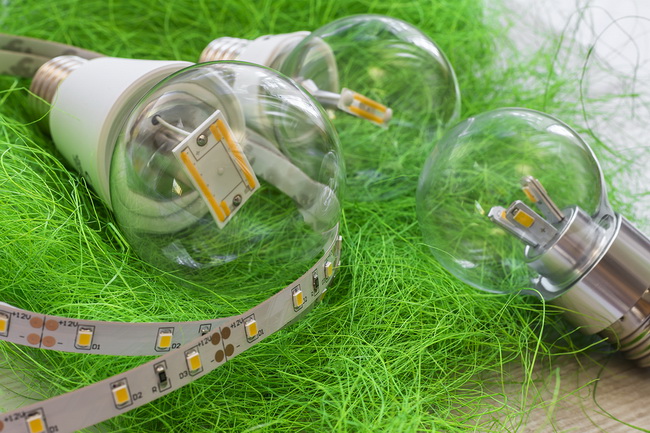- Make It Yourself Lavender Heart-Shaped Bath Bombs!
- 20 Things You Never Knew About “Down There”
- 12 Best Foods For Those Suffering From Arthritis Pain
- 12 Personal Hygiene Mistakes Almost Everyone Makes (Mom Never Told You About #4!)
- 15 Medicinal Plants And Herbs From The Cherokee People
- 12 Mind-Blowing Benefits Of Drinking Coconut Water During Pregnancy
- 12 Outstanding Winter Foods That Won’t Fatten You Up Like A Christmas Turkey
The Truth About CFL and LED Energy-Saving Light Bulbs

Photo credit: bigstock.com
In case you haven’t heard, the United States is phasing out the 40 and 60 watt low efficiency incandescent light bulbs. This means that soon, unless you plan on using higher watt bulbs, you will be forced to buy either LED or CFL energy-saving light bulbs.
A great many people are not happy about this mandate put into law by former President George W. Bush. Although a recent poll states that a full 65 percent of Americans plan on switching over to compact fluorescent lights (CFL) or light-emitting diodes (LED) or even halogen bulbs, still another 30 percent states that they have safety concerns regarding these new lights, especially the CFL bulbs, and some even state that they are stockpiling the old style bulbs to keep them in the lighting style to which they have become accustomed.
There are other complaints as well regarding their cost and poor performance, but the major complaint seems to center around the mercury that inside most CFLs. Are these lights truly dangerous or simply inefficient?
Have you seen pictures in an email warning or perhaps even circulating on Facebook or other social media sites showing severely disfigured hands and feet that needed tubes to remove “dead tissue” after trying to take out a CFL bulb that exploded?
Let’s take a look at these concerns so you can make informed decisions for yourself.
1. Those Pictures
If you have seen those terrible and graphic pictures of a foot or hand that supposedly belongs to someone who tried to change their energy saving light bulb that exploded when they touched it, you can rest easy. The bad news is that those photos are real; however, the good news is that those injuries did not happen while changing any type of light bulb. This hoax has been around for quite a few years and seems to crop up fresh every few years. Although there is no doubt that these bulbs do contain mercury, this substance would not cause the type of damage that you see in these photos. If mercury were poured into an open wound, it would cause symptoms of poisoning including liver and kidney failure. These pictures appear to be of the type of damage caused by flesh-eating bacteria.
2. Speaking Of Mercury …
Let’s talk about the major fear most people have: The mercury that is in all CFL bulbs. Although these bulbs do require a bit more careful handling and disposal, most of the health hazards appear to be blown way out of proportion. One 2008 study showed that a typical CFL bulb has between three and five milligrams of mercury. That might sound like a lot, but consider this: That is only about 1/100th of the amount of mercury found in non-digital home thermostats. Also, when you consider that the average can of tuna fish has 50 micrograms of mercury, you can see that the dangers of the mercury content in these bulbs have been a bit overstated. Another study, published in 2011 from the Jackson State University, showed that even a broken bulb left unattended in a room over a 24-hour period only released 0.04 to 0.7 milligrams of mercury. At this rate, it would take weeks, perhaps even a few months, for the room to reach mercury levels that would be dangerous to a small child. Although these bulbs do require special handling, it’s really not a big deal. Simply put the burned out or broken bulb in Ziploc bag and take it to either Lowe’s or Home Depot, where they have a recycling or drop-off center for these bulbs.
Continue to Page 2
































